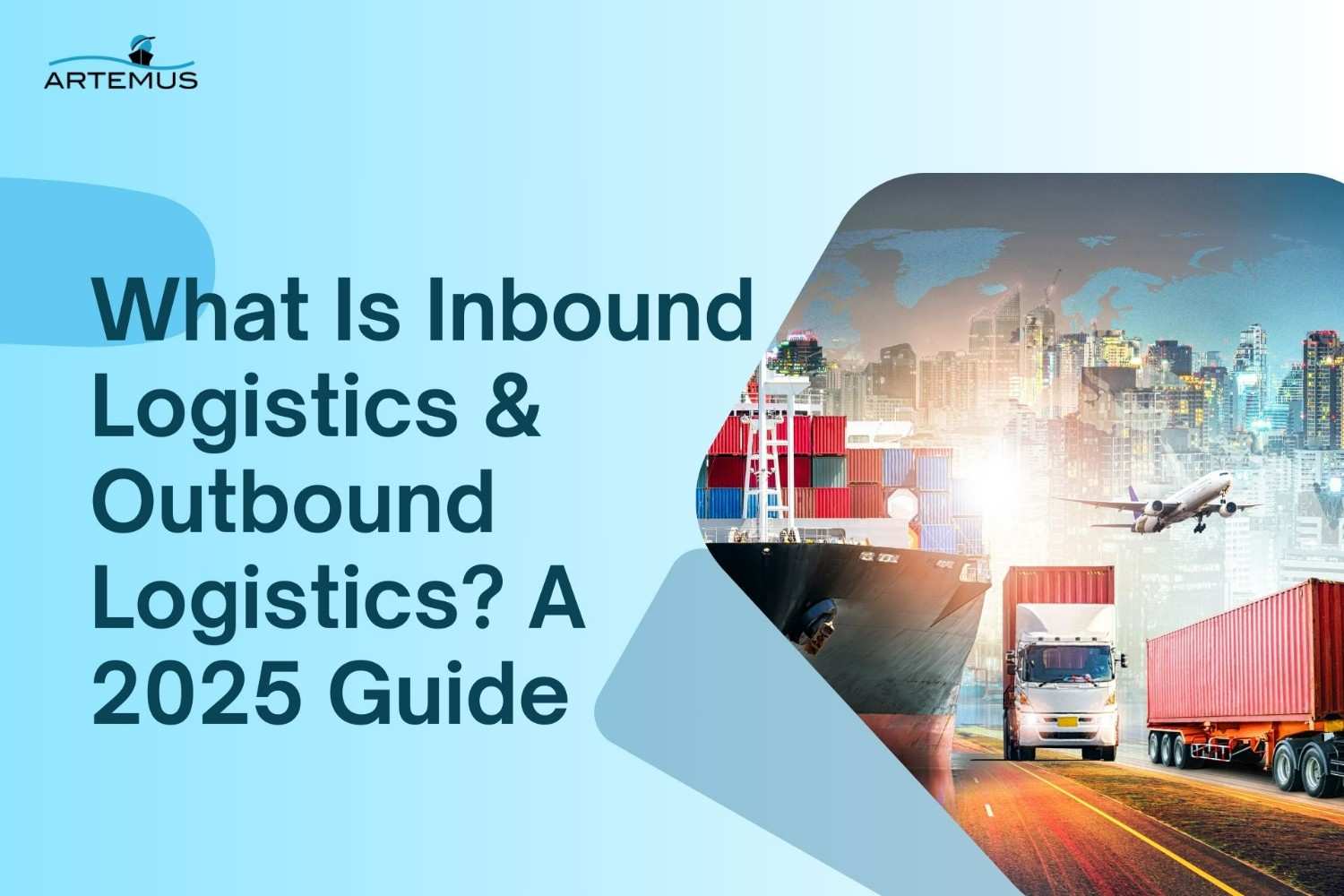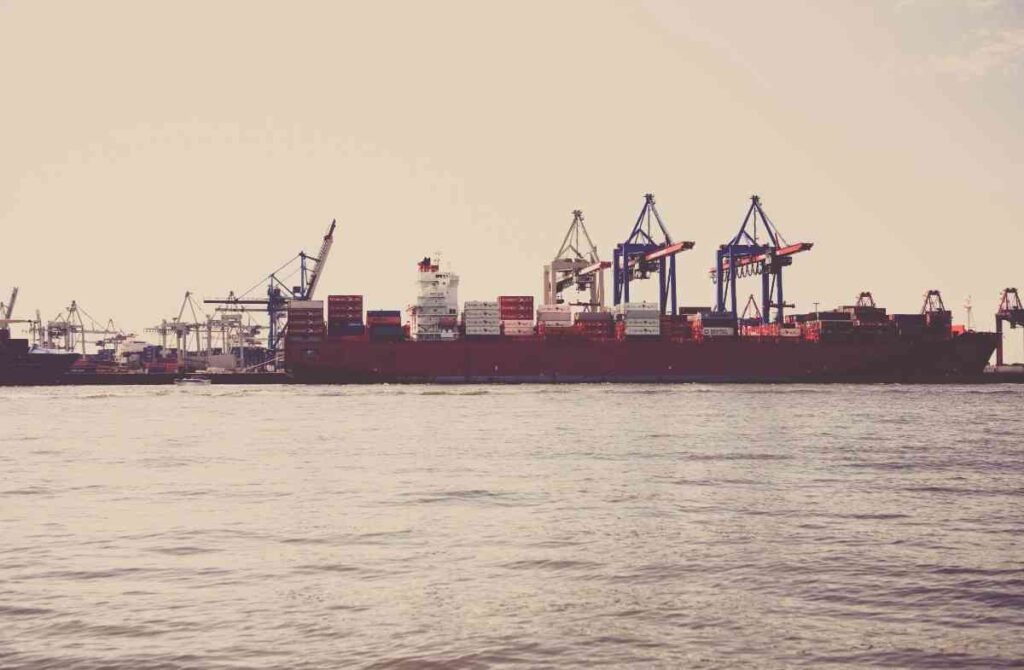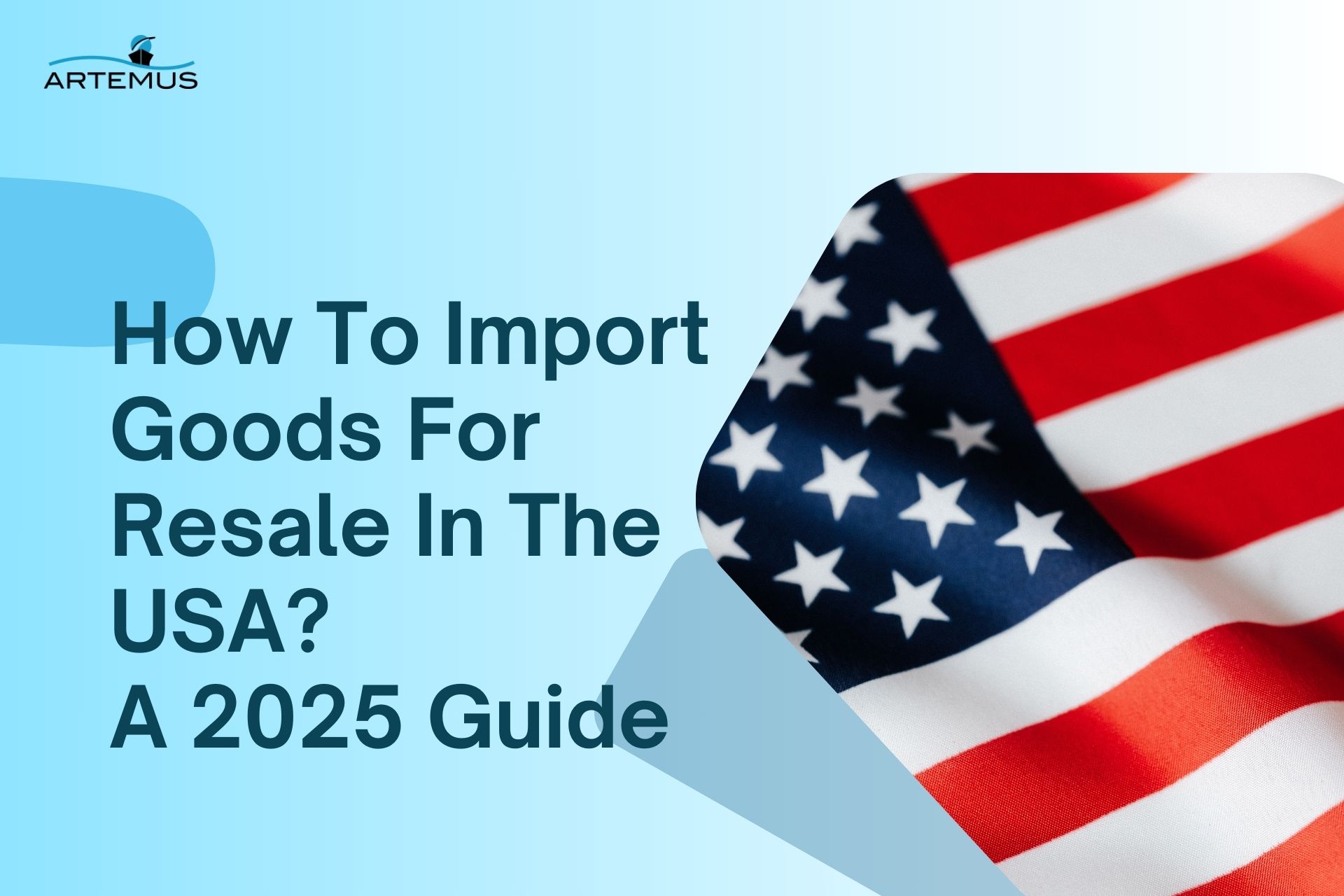
What Is Inbound Logistics & Outbound Logistics? A 2025 Guide
In the dynamic world of supply chain management, understanding the nuances of inbound and outbound logistics is crucial for operational

When it comes to global shipping, businesses often face critical decisions regarding air vs sea freight. Each mode of transportation comes with its unique set of advantages and trade-offs.
Air freight is known for its speed and reliability, making it ideal for time-sensitive shipments. However, it tends to be more expensive compared to sea freight, which, while slower, offers a more cost-effective & reliable solution for transporting large volumes of goods.
Moreover, Artemus provides comprehensive ISF (Importer Security Filing), AMS (Automated Manifest System), and AES (Automated Export System) software solutions to ensure smooth and compliant shipping operations.
Table Of Contents
Air freight is a method of transporting goods via airplanes, offering a fast and efficient solution for businesses that need to move goods quickly across large distances. Air cargo is typically preferred for high-value, time-sensitive shipments, such as electronics, pharmaceuticals, perishable items, and fashion products that need to reach markets swiftly.
Unlike other modes of transport, air freight offers faster transit times, often reducing the journey from days or weeks to mere hours or a few days, depending on the distance and customs procedures.
One of the primary advantages of air freight is its global reach, as it allows companies to ship goods to almost any part of the world, often with multiple daily flights to popular destinations. Air freight services also tend to be reliable, as flights generally adhere to fixed schedules, ensuring minimal delays in most cases.
Additionally, air freight provides better security for valuable goods, as airports have stringent security protocols and fewer touchpoints, reducing the likelihood of damage or loss.
However, air freight typically costs more than other options, such as sea freight, due to higher fuel expenses, specialized handling, and airport fees. While it’s ideal for smaller, high-value goods, businesses with bulk or heavy items may find it cost-prohibitive.
Still, for urgent shipments where time is a critical factor, air freight remains the preferred choice for companies looking to stay agile in a global market.
Sea freight, also known as ocean freight, is a method of shipping goods by sea, usually in large containers transported on cargo ships. This mode of transportation is ideal for businesses moving bulk goods, heavy machinery, raw materials, or items that aren’t time-sensitive.
It is the most common way to transport goods internationally, with a majority of global trade reliant on sea freight due to its capacity to move large quantities of cargo over long distances at a relatively lower cost compared to air freight.
One of the key advantages of sea freight is its cost-effectiveness, especially for businesses needing to ship large or heavy items. Shipping containers come in standardized sizes, which makes it easier to consolidate cargo and reduce shipping costs.
Additionally, sea freight offers flexibility with different container options, such as full container load (FCL) or less-than-container load (LCL), allowing businesses to only pay for the space they need. Despite being slower than air freight, ocean shipping is more environmentally friendly, as ships produce a lower carbon footprint per ton of goods transported.
However, sea freight does come with certain limitations, primarily the longer transit times, which can range from weeks to months depending on the destination. This makes it less suitable for perishable or highly time-sensitive items.
Additionally, sea freight can be affected by weather conditions, port congestion, and customs delays, which may cause unexpected hold-ups. Nonetheless, for businesses focused on cost savings and scalability in global trade, sea freight remains an essential and highly reliable transportation option.

When choosing between air freight and sea freight for transporting goods internationally, it’s crucial to understand the key differences that can impact cost, speed, reliability, and overall logistics strategy. Here are five major differences between air freight and sea freight:
Air freight is significantly faster than sea freight. Airplanes can transport goods across the globe in a matter of days, making them the preferred choice for time-sensitive shipments, high-value items, and perishable goods. This speed allows businesses to respond quickly to market demands and reduces lead times.
Sea freight, on the other hand, is much slower. Transcontinental voyages can take several weeks, depending on the distance and shipping route. While slower, sea freight is suitable for goods that are not time-critical and can tolerate longer transit times.
Air freight is generally more costly than sea freight. The high costs are due to the speed, the fuel required, and the limited space available on aircraft. Businesses typically reserve air freight for smaller, high-value shipments or when the delivery time is a critical factor.
Sea freight is generally more cost-effective, especially for large, bulky shipments or high-volume orders. The cost per unit weight is much lower, making it an economical choice for businesses that need to ship large quantities of goods without urgency.
Airplanes have limited cargo space and weight restrictions, which can pose a challenge for transporting large volumes. For companies with high-volume shipping needs, air freight may require multiple shipments, further increasing costs and logistical complexity.
Sea vessels have a much larger capacity compared to airplanes, allowing them to carry massive quantities of cargo. Standard shipping containers (TEUs) can hold significant amounts of goods, making sea freight ideal for businesses needing to transport large volumes at once.
Air freight has a higher environmental impact due to its substantial carbon emissions per kilogram of cargo. The fuel consumption and energy required for air transport contribute to a larger carbon footprint, making it less environmentally friendly.
Sea freight is generally more environmentally sustainable compared to air freight. Ships emit less CO2 per ton of cargo transported over long distances. While not entirely green, sea freight offers a lower carbon footprint, particularly when transporting large volumes.
Air freight is known for its high reliability, with frequent and regular flights ensuring consistent delivery schedules. However, it may face disruptions due to weather conditions, air traffic control issues, and stringent security measures at airports.
Although sea freight generally takes longer, it offers a high degree of reliability and predictability. Shipping schedules are well-established, and barring extreme weather conditions or port congestion, the timelines are consistent. For businesses with flexible timelines, this reliability is beneficial.
Related: Freight Forwarders Arrange Transportation Only By Ocean Shipping
When it comes to carbon footprint, air freight and sea freight differ significantly due to the energy requirements and emissions associated with each mode of transport. Air freight, while offering speed and efficiency, has a much higher carbon footprint per kilogram of cargo than sea freight.
Airplanes consume vast amounts of fuel to lift cargo into the air and sustain high-speed travel, resulting in elevated CO₂ emissions per ton-kilometer. This makes air freight one of the most carbon-intensive transportation methods, which is a key consideration for businesses aiming to reduce their environmental impact.
In contrast, sea freight is generally a more sustainable option for large volumes of cargo. Cargo ships move goods using far less fuel per unit of weight and distance, making them more energy-efficient.
While ocean shipping still contributes to CO₂ emissions, its carbon output per ton-kilometer is significantly lower than that of air freight. This efficiency makes sea freight a preferred choice for businesses with sustainability goals, as well as for companies transporting bulk goods that don’t require expedited delivery.
When comparing transit times, air freight is the undisputed leader, providing the fastest way to move goods across continents. Air shipments generally take only a few days from origin to destination, making them ideal for time-sensitive items such as electronics, medical supplies, and fashion products that need to reach markets quickly.
For businesses with tight deadlines or perishable goods, air freight can offer same-day or next-day options, which is invaluable when time is of the essence. Additionally, air freight’s fixed schedules and frequent flights to major destinations allow for precise planning and reduced lead times, which can help companies meet demand and avoid stockouts.
Ocean freight, on the other hand, is significantly slower, with transit times typically ranging from several weeks to over a month, depending on the distance between ports and any stops along the route. While this makes it unsuitable for urgent shipments, sea freight is perfectly suited for less time-sensitive goods, such as raw materials, bulk products, and oversized items.
Many businesses plan around these longer transit times, benefiting from the cost savings and capacity that sea freight offers. Ocean carriers generally follow weekly or bi-weekly schedules, so while less frequent than air freight, they are reliable for long-term planning and inventory management.
Yes, air freight is generally more expensive than sea freight. The higher costs associated with air freight stem from the operational expenses of air transport, including fuel, airport fees, and handling charges, as well as the need for specialized infrastructure.
This results in significantly higher rates per kilogram of cargo compared to sea freight, which uses larger cargo ships that can transport massive volumes of goods at a lower fuel cost per unit. Air freight costs can be several times higher than sea freight, especially for bulky or heavy items.
Sea freight, on the other hand, is much more cost-effective, particularly for large or heavy shipments. Cargo ships can carry thousands of containers at once, spreading the fuel and operational costs across large volumes of goods, which helps keep rates lower.
While sea freight takes longer to reach its destination, it’s the preferred option for businesses focused on cost savings and transporting non-urgent goods.
Air freight is a popular mode of transportation for goods, offering both benefits and drawbacks. Understanding these advantages and disadvantages is crucial for businesses and individuals to make informed decisions about their logistics needs.
Air freight is the fastest way to transport goods, making it ideal for time-sensitive shipments. It can cover long distances in a short period, reducing transit times significantly compared to other modes of transportation.
Air freight ensures a high level of safety and security for cargo due to its rigorous safety standards and advanced technology. This makes it a reliable choice for transporting valuable or sensitive goods.
Air transport provides global connectivity, allowing goods to be shipped to any part of the world, even remote or inaccessible locations. This makes it a crucial element of international trade and commerce.
Air transport can overcome geographical barriers, such as mountains or oceans, making it a convenient option for transporting goods across long distances.
Modern aircraft have significant cargo capacity, making them suitable for transporting large volumes of goods efficiently.
Air freight is generally more expensive than other modes of transportation due to factors such as fuel costs, airport fees, safety measures, and limited space and weight capacity.
Air transport is susceptible to weather conditions, which can cause delays, cancellations, or route changes. This can disrupt supply chains and impact business operations.
Air transport has a significant environmental impact due to carbon emissions, contributing to noise pollution and local air quality issues.
Air transport requires a well-developed infrastructure, including airports and supporting facilities. This can be a limitation in areas with limited or no air transport infrastructure.
The size and weight limitations of aircraft mean that air freight is not suitable for all types of goods, especially large or heavy items.
Related: What Is Ocean Freight? Everything You Need To Know
Sea freight is a popular mode of transportation for goods, offering both benefits and drawbacks. Understanding these advantages and disadvantages is crucial for businesses and individuals to make informed decisions about their logistics needs.
Sea freight is significantly cheaper than air freight, making it an attractive option for large or heavy shipments. The cost of sea freight is often lower due to the larger capacity of ships compared to airplanes.
Sea freight can handle large volumes of goods efficiently, making it ideal for bulk cargo, raw materials, and other large quantities of goods. This efficiency translates into economies of scale, reducing transport costs.
Sea freight is a more eco-friendly option compared to air freight. Ships consume less fuel, resulting in lower carbon emissions and a smaller carbon footprint.
Sea freight provides global connectivity through extensive port networks and sea routes, ensuring that goods can be transported over long distances, including intercontinental routes.
Ships are designed to safely transport hazardous materials and important cargo. The industry has protocols to ensure the security of the ship, crew, cargo, and environment.
Sea freight can accommodate huge quantities of goods, making it suitable for large or heavy shipments that cannot be transported by air.
Related: How Long Does Sea Freight Take From China To USA?
Choosing the right freight option—sea freight or air freight—depends on several key factors specific to your business needs and shipment characteristics. If speed is your primary concern, air freight is the optimal choice due to its rapid transit times, allowing goods to reach their destination in days rather than weeks.
This renders it ideal for time-sensitive, high-value, or perishable items. However, this speed comes at a premium, with higher costs per unit weight and stringent weight and size limitations.
On the other hand, sea freight is more cost-effective and can handle larger, bulkier shipments, making it suitable for non-urgent goods, oversized items, and high-volume orders. While it has longer transit times, the cost savings and greater capacity make it a practical option for businesses looking to minimize shipping expenses.
Additionally, sea freight is generally more environmentally sustainable, offering a lower carbon footprint for large shipments. Ultimately, the decision hinges on balancing cost, speed, shipment size, and environmental considerations to best meet your logistical and financial goals.
Related: What Does Customs Clearance Completed Mean? Key Takeaways
When it comes to shipping goods, both air freight and sea freight offer distinct advantages and disadvantages. Choosing the right mode of transportation depends on the type of goods being shipped, their value, fragility, and the urgency of delivery. Here are some ideal goods for air and sea freight:
Related: How To Import A Car From Japan To USA? A 7-Step Process

Artemus provides state-of-the-art ISF (Importer Security Filing) and AMS (Automated Manifest System) software solutions, specifically designed to streamline compliance for sea freight shipments.
These tools help businesses adhere to stringent international shipping regulations, ensuring that all necessary documentation and filings are accurately completed and submitted on time.
By leveraging Artemus’s software, companies can minimize the risk of costly delays and penalties, enhance operational efficiency, and maintain smooth, compliant shipping processes. This robust compliance support is essential for businesses navigating the complexities of global sea freight logistics.
Related: How Much Does It Cost To Become A Freight Broker In 2024
The choice between sea and air freight depends on priorities: sea freight is cost-effective for large shipments with flexible timelines, while air freight is faster but more expensive, suitable for urgent or high-value goods.
One advantage of air freight is its speed, allowing for rapid delivery of goods over long distances.
Indeed, air freight typically incurs higher costs compared to sea freight owing to its faster delivery times, increased fuel expenses, and constrained cargo capacity. It is best suited for time-sensitive, high-value shipments where speed is a critical factor.
Shipping by sea is generally much cheaper than shipping by air, especially for bulk or heavy items. Sea freight’s lower cost per unit is ideal for larger shipments without urgent delivery needs.
Sea freight is the transport of goods via cargo ships over oceans, suitable for large volumes and longer transit times. Air freight, on the other hand, uses airplanes to deliver goods quickly across long distances, best for smaller, high-value, or time-sensitive shipments.
Air freight rates vary widely, generally ranging from $4 to $8 per kilogram, depending on the route, service level, and cargo type. Costs may increase for faster shipping options or special handling needs.
Sea freight is typically the most economical option, especially for large or heavy shipments. Its lower cost per kilogram makes it preferable for goods that are not time-sensitive and can endure longer transit times.

In conclusion, choosing between air freight and sea freight hinges on a careful evaluation of your shipment’s urgency, size, cost constraints, and environmental impact. Air freight offers unparalleled speed and reliability, making it ideal for time-sensitive and high-value goods, albeit at a higher cost.
Conversely, sea freight provides a more economical solution for large volumes and bulky items, with the trade-off of longer transit times.
Related: Freight Broker License Costs: The Price Of Entry In 2024

In the dynamic world of supply chain management, understanding the nuances of inbound and outbound logistics is crucial for operational

In today’s interconnected world, businesses rely heavily on global trade to expand their markets, access new resources, and drive growth.

Importing goods for resale in the USA presents a lucrative business opportunity, but navigating the complexities of U.S. customs regulations,
Get In Touch
Artemus’ Software Solutions for ISF, AMS, Japan AFR, eManifest Canada, & Panama B2B filings.